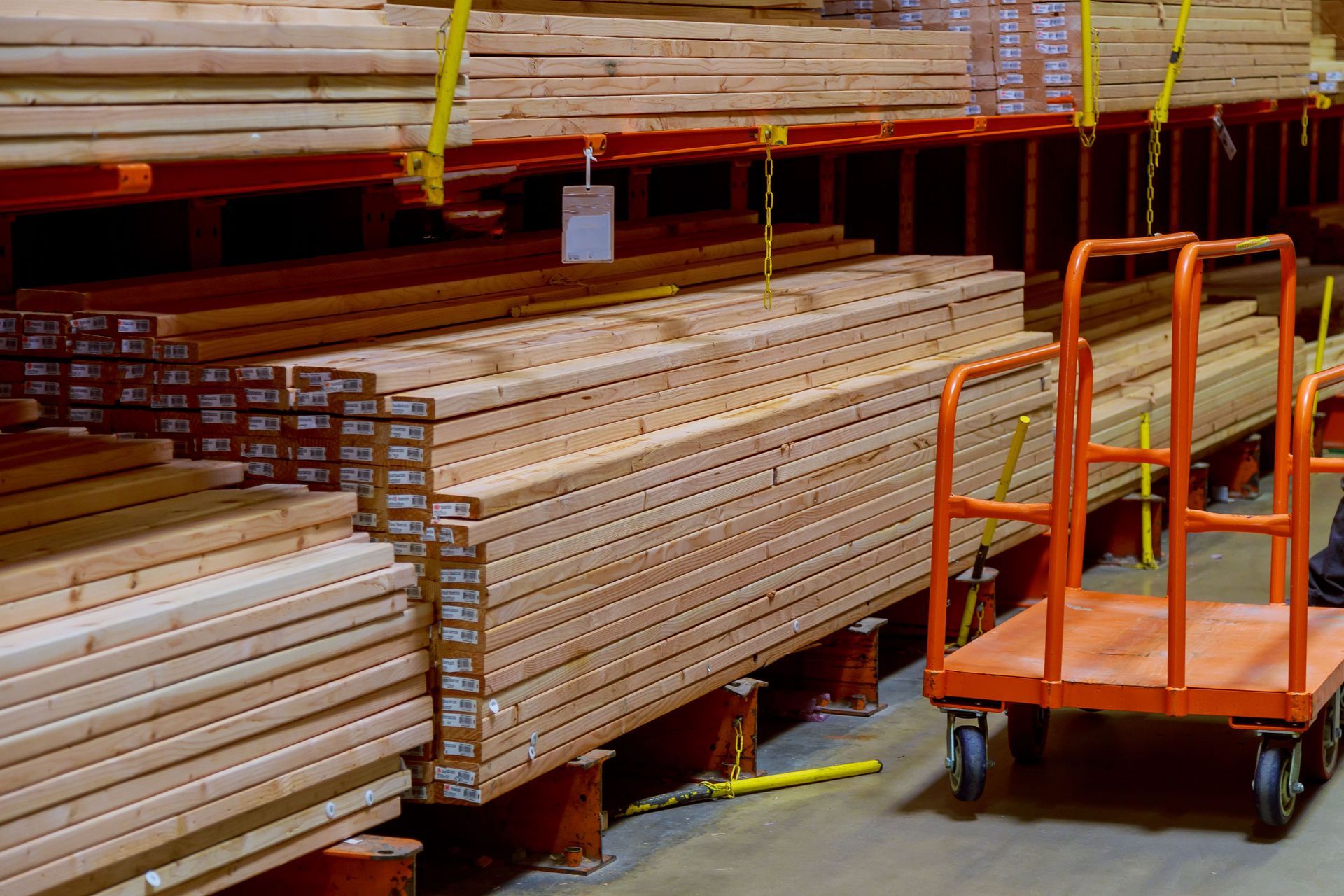November 20, 2025
Few materials have shaped human civilization quite like lumber. From framing homes to crafting heirloom furniture, it has remained a cornerstone of construction, design, and creativity for centuries. Today, lumber continues to evolve alongside modern technology, offering sustainable, durable, and versatile solutions for projects of all kinds. Whether you’re a seasoned contractor or a weekend DIYer, understanding how to select and use lumber properly can make or break your results.
According to IBISWorld, lumber and building material stores have experienced significant growth in recent years due to the booming residential construction market and rising prices. This surge underscores the growing demand for high-quality, responsibly sourced lumber that supports efficient building and design practices. As you explore your next project, knowing what type of wood to choose, how to maintain it, and where to find reliable suppliers will ensure long-lasting, beautiful outcomes.
Choose the Right Type of Lumber
Selecting the proper lumber starts with understanding the difference between softwoods, hardwoods, engineered woods, and exotic varieties. Softwoods like pine, fir, and spruce grow faster and are easier to work with, making them ideal for framing, paneling, and trim. These options are lightweight and cost-effective but may need additional treatment for moisture resistance in outdoor applications.
Hardwoods, such as oak, maple, and walnut, grow more slowly and are denser, offering greater strength and longevity. They’re excellent for flooring, furniture, and cabinetry where aesthetics and durability are priorities. Engineered woods like plywood or laminated veneer lumber (LVL) combine multiple layers and adhesives for added stability and uniformity. For high-end design projects, exotic species such as teak or mahogany provide rich color, striking grain, and lasting beauty when responsibly sourced.
Each type of lumber brings its own strengths to a project. Builders often mix types strategically—using softwood for structure and hardwood for finishing—to balance cost, durability, and appearance. Understanding these distinctions ensures you’re not just buying wood, but investing in the right foundation for your work.
Understand Lumber Grading and Treatment
Lumber is graded based on appearance and structural integrity. “Select” grades are known for their clean surfaces and minimal knots, often used in visible or decorative applications. “Standard” or “construction” grades contain more natural imperfections, suitable for framing or hidden structures. Knowing the right grade saves money while ensuring safety and strength.
Treatment also matters. Pressure-treated lumber resists rot and insects, making it essential for decks, fences, and exterior structures. Kiln-dried boards, on the other hand, are ideal for interior use since they contain less moisture, minimizing the risk of warping or cracking over time. Some lumber types also undergo special coatings to improve fire resistance or weather performance. Choosing treated or untreated materials depends on where and how they’ll be used. For instance, deck posts require ground-contact-rated wood, while interior trim should remain untreated for a smoother finish. Always verify treatment types and follow manufacturer recommendations to ensure your project’s longevity.
Explore Popular Uses of Lumber in Construction
Lumber remains the backbone of modern construction, serving as a sustainable alternative to steel and concrete. It’s used for framing homes, roofing, wall sheathing, and even large commercial structures through engineered systems. Its natural insulation properties and easy adaptability make it an attractive choice for energy-efficient buildings.
Builders favor lumber for its renewable nature and strength-to-weight ratio. Its lightness simplifies transportation and on-site assembly, while its flexibility supports complex architectural designs. As green building practices expand, sustainably harvested lumber from certified forests helps reduce environmental footprints and contributes to LEED-certified projects. Whether used for residential framing or intricate decorative finishes, lumber’s reliability and renewability secure its place as an essential construction material—one that balances practicality with environmental responsibility.
Use Lumber in Furniture and Interior Design
Beyond its structural purpose, lumber offers endless aesthetic potential. Furniture makers, designers, and hobbyists alike rely on it for its warmth, natural texture, and timeless charm. Hardwood species like cherry or walnut bring sophistication and depth to furniture, while softwoods provide a lighter, more rustic feel.
Custom furniture made from quality lumber ages beautifully, developing patina and character over time. Whether you’re crafting a coffee table, cabinetry, or built-in shelving, the grain patterns and colors can completely transform an interior. Engineered products like MDF or plywood also play vital roles in mass production, offering affordability without sacrificing quality. Proper finishing, sanding, and sealing elevate any piece, protecting the surface while accentuating its natural beauty. With the right care, wood furniture becomes a sustainable, enduring centerpiece that bridges tradition and modern design.
Select the Right Lumber for Outdoor Projects
Outdoor environments expose lumber to moisture, insects, and temperature changes—so choosing wisely is essential. Naturally resistant woods like cedar and redwood thrive in these conditions, while pressure-treated lumber offers enhanced protection at a lower cost. Both are excellent for decks, pergolas, fencing, and outdoor furniture.
Maintenance is crucial for longevity. Regular cleaning, sealing, and staining help prevent decay and preserve color. For homeowners seeking reduced upkeep, composite decking combines recycled plastics and wood fibers to deliver long-lasting performance with minimal effort. Still, few materials match real wood’s warmth and authenticity. For those building in coastal or humid climates, proper airflow and water drainage under deck boards extend the life of the structure. When selected and maintained correctly, outdoor lumber enhances both aesthetics and functionality for years to come.
Appreciate Lumber in Artistic and Decorative Applications
Lumber’s beauty isn’t limited to construction—it’s a canvas for creativity. Artists and craftsmen have long used wood for sculptures, carvings, and decorative accents. The grain, color, and texture of different species inspire everything from minimalist wall art to intricate marquetry.
In modern architecture, reclaimed or distressed lumber adds character and sustainability to interior spaces. Accent walls, ceiling beams, and custom installations bring a tactile, organic element into contemporary homes. Craftsmen also experiment with burning, staining, or etching techniques to achieve striking visual effects. These artistic uses highlight how lumber connects craftsmanship, design, and nature. It embodies warmth, authenticity, and the enduring spirit of creation—qualities that resonate across centuries of artistry.
Prioritize Sustainability When Buying Lumber
Today’s builders and consumers increasingly emphasize sustainability when selecting materials. Purchasing lumber from certified sources like the Forest Stewardship Council (FSC) ensures responsible forest management and environmental preservation. This practice helps maintain biodiversity, prevent overharvesting, and support local economies.
Sustainable forestry also promotes innovation in manufacturing, encouraging the use of recycled or reclaimed wood. Many engineered products reuse wood fibers or sawmill byproducts, reducing waste while meeting modern performance standards. Such initiatives align with the growing movement toward eco-friendly building and design. By supporting sustainable practices, you help protect forests for future generations while enjoying the benefits of quality materials. Conscious sourcing ensures every plank tells a story not only of craftsmanship but also of stewardship.
Lumber remains one of the most versatile and enduring materials in the world of building and design. From sturdy framing and refined furniture to innovative composites and artistic creations, its adaptability and beauty continue to inspire. As construction trends evolve, the focus on sustainability and quality sourcing grows even stronger, ensuring that lumber remains a cornerstone of responsible craftsmanship for generations.
If you’re planning your next project and want dependable materials, expert advice, and top-quality construction supplies, visit Island Lumber & Hardware in Holmes Beach, FL. Our knowledgeable team can help you select the perfect
lumber for your needs, whether you’re tackling a home renovation, new build, or creative design project.

